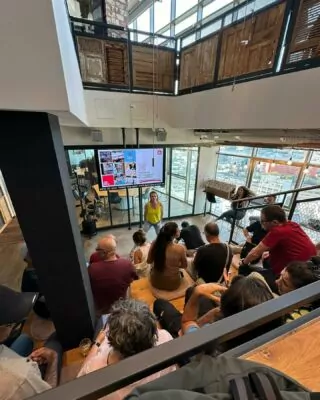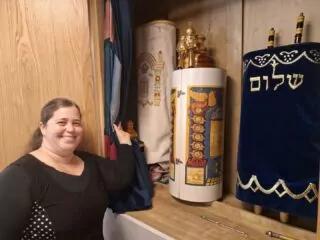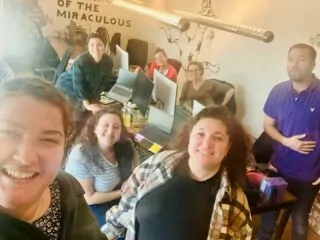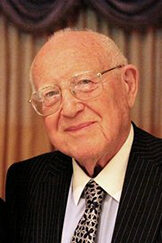
Branko Lustig (1932-2019)
As Hollywood film producer Branko Lustig accepted the Oscar Best Picture award for Schindler’s List he remarked that, “My tattoo number was A3317. It’s a long way from Auschwitz to this stage.” He’d also come a long way from Osijek, the Croatian city where he was born. When the Nazis invaded in 1941, Lustig (an only child) and his parents fled to Hungary. Aged 12, he was sent to a labor camp near Auschwitz in 1944. On one of his first days in the camp, Lustig saw seven prisoners about to be hanged. “They shouted in Yiddish, ‘Tell the story of how we died! You should live well.’” He would never forget the men or their commandment.
Lustig survived a number of camps due in part to protection from a German officer who had known his father in Osijek. Nonetheless, he weighed just 66 pounds and was ill with typhoid when British troops playing bagpipes liberated Bergen-Belsen in 1945. As he heard the music, Lustig thought that he was dead and in heaven “and these are angels playing.” His mother also survived the war, but nearly all the rest of his extended family, including his father, perished.
Lustig’s career in showbusiness was always shadowed by the tragedy. He started acting when he was in a displaced people’s camp, performing plays for fellow refugees. He returned to Croatia, where he moved into film production. He was location manager for Fiddler of the Roof and Sophie’s Choice, both of which were shot in Yugoslavia. In 1988, he moved to America where he played a significant part in increasing public awareness of the Holocaust. He was associate director of the big-budget War and Remembrance television series, which was the first commercial project that included filming in Auschwitz.
The cinematic and cultural impact of Schindler’s List was far greater still. When he first met with director Steven Spielberg about the project, Lustig rolled up his sleeve to reveal his tattoo from Auschwitz. “This,” he said, “is my only qualification to work on this film.” While some were uneasy that Hollywood dramatic techniques were used to portray the Holocaust, Lustig believed movies like Schindler’s List were crucial in keeping the memory alive. He and Spielberg also helped found and fund the USC Shoah Foundation, which has carried out filmed interviews of over 55,000 Holocaust survivors.
After donating his Oscar for Schindler’s List to the Yad Vashem museum, Lustig produced a number of other successful movies, often in conjunction with director Ridley Scott and actor Russell Crowe. In 2000, Lustig won another Academy Award for Gladiator. His connection to his past remained strong. He spent many of his later years in Croatia, where he established a Jewish film festival. In 2011, he returned once again to Auschwitz, this time to celebrate the Bar Mitzvah he had missed during the Holocaust. As young students listened, he commented that “Tolerance is my message today. And ‘never again’ is my hope and dream for always.”
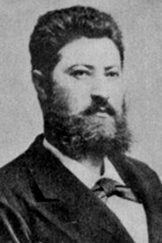
David Schwarz (1852-1897)
While we all know about the Wright brothers, not many realize that the Croatian inventor David Schwarz also played a key role in of the development of the airplane. In 1897, six years before the take-off at Kitty Hawk, Schwarz created the first all-metal airship that, at least for a few miles, was able to fly.
Born in modern-day Hungary but spending most of his life in Zagreb, Schwarz was a Jewish timber merchant fascinated by technology. He developed improvements in woodcutting machinery before becoming obsessed in the 1880s with the possibility for mechanized flight far beyond the gas-powered balloons then in use. After intense self-education, Schwarz decided that the new material of aluminium could be used to build a self-directing airship.
Although many at the time mocked the idea of flying machines, Europe’s rulers were aware of their potential military importance. Schwarz initially looked for backing from the Austro-Hungarian ministry of war before securing interest from the Russian government. By 1893, he had designed and built his first airship. Revealing their respective obsessions, journalists thought it looked like a pencil, while military observers compared its shape with that of a bullet. However, his first “flight” in St Petersburg failed before it even began. The airship frame collapsed when the machine was filled with gas. Schwarz fled Russia in ignominy, while his financial partner, the industrialist Carl Berg, was so alarmed at cost overruns and other problems that he began to fear that Schwarz was a swindler.
However, in 1894, the German military contracted Schwarz to build another airship and provided army personnel and facilities to help. Even Emperor Wilhelm II was intrigued, visiting Schwarz’s Berlin hangar several times. Always worried about others stealing his ideas, Schwarz tried to keep the construction secret and only military people were on hand to witness the test flight on October 8, 1896. Gas problems meant that the airship got only a few meters off the ground. However, the propellers and engine worked well. The German general staff were cautiously optimistic while Schwarz was more convinced than ever that controlled, sustained flight was possible. In 1897, Schwarz had made his technical alterations and was almost ready to try again when he died suddenly. On hearing the news, Berg believed it was a ruse and that Schwarz had instead absconded to sell his secrets to the highest bidder. But Schwarz had indeed died before ever seeing his invention truly fly.
Schwarz’s widow Melanie and the entrepreneurial Berg worked with the German military to put the airship into the air. On November 13, 1897 at Tempelhof near Berlin, Schwarz’s airship with its 16-horsepower Daimler engine flew for several miles at a maximum height of 460 feet before crashing. The pilot escaped unharmed. According to some, the German general Count Ferdinand von Zeppelin acquired, through patent purchasing or pilfering, Schwarz’s designs and used them for the Zeppelin airship that began to fly three years later.
Be that as it may, there is no doubt that von Zeppelin, the Wright brothers, and the other famous names in aviation history were building, in their own way, on the work done by a now almost unknown inventor from Croatia.
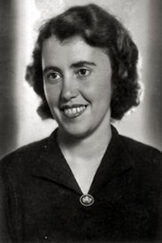
Elvira Kohn (1914-2003)
Elvira Kohn was a Holocaust survivor and Communist photojournalist. She served alongside and took remarkable photographs of partisan fighters as they beat back the Nazi army and Croatian fascists. Kohn’s life was shaped by war and by photography. She was born at the start of World War I. Her father, a traveling salesman, was, like most Croatian men, conscripted into the army of the Austro-Hungarian empire. He died in a prisoner of war camp. Elvira was brought up by her mother and grandparents in Vinkovci, part of what became after the war the Kingdom of Yugoslavia. The family spoke Croatian and German. According to Elvira, “we respected Jewish customs and traditions but weren’t very religious.”
At age 17, Kohn fell in love with photography. She moved to Dubrovnik in 1932 and worked in the burgeoning new field of photojournalism. She encountered little anti-Semitism until 1941 when the Axis powers invaded Yugoslavia, with Dubrovnik and the Adriatic coast coming under Italian control. Life for the Jews under Italian occupation was, while not easy, far safer than elsewhere in Croatia. Kohn was required to wear a badge with the letter Z (for Židov, or Jew) but continued to work as a photojournalist and was treated with “great respect” by locals.
Things worsened in 1942 when she was among the several thousand Jews interned on the island of Rab. Conditions were harsh, and approximately a third of internees died through disease. Throughout this traumatic time, Kohn zealously guarded and hid her prized Leica camera. In May 1943, the capitulating Italian army abandoned the island. While some of the freed Jews were captured by the Nazis and sent to Auschwitz, most joined the communist-led partisans, suffering horrendous casualty rates in battles against German and Ustaŝe forces. Kohn served as a partisan photographer in the parallel propaganda war, taking portraits of fighters and scenes from the war. In May 1945, she was in Zagreb to photograph the mass celebrations as partisans liberated the city. She spent the night in the abandoned office of fascist leader Ante Pavelić, sleeping on a table with her rifle and camera beside her.
Many of her family members were killed during the Holocaust, but Elvira’s mother, who served as a chef with the partisans, survived. Elvira emerged from the fighting a committed Communist, seeing them as the saviors of what was known as the Socialist Republic of Yugoslavia. Until 1974, she served in the Yugoslav army as a photographer, rising to a senior officer position. The Yugoslav communists allowed Jews somewhat more freedom than elsewhere in Eastern Europe. Kohn was permitted to visit Israel and remained connected to Zagreb’s considerably reduced Jewish community. She bemoaned the fall of communism and the violent breakup of Yugoslavia in the 1990s, although she was delighted when the Croatian National Museum accepted what she described as her “legacy” – her photos of partisans, “many of them teenagers” who “fought to free our land.”
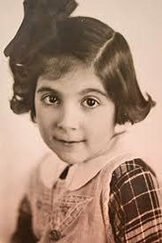
Lea Deutsch (1927-1943)
A child actor and dancer so talented that she was known as “Croatia’s Shirley Temple,” Lea Deutsch died at age 16 in a cattle wagon bound for Auschwitz. She was born in Zagreb, part of an educated and cultured family. Her father was a lawyer, her mother a chess player and housewife. By age five, Lea was already appearing in productions of Shakespeare and Molière at the Croatian National Theatre. As her roles and popularity grew, her reputation spread overseas and short documentaries about her were filmed.
Her stage and dancing career finished abruptly in 1941 when, immediately following the German invasion, the puppet Croatian government instituted a string of anti-Semitism laws. The 14-year-old Lea was excluded from her school and banned from acting. A schoolmate recalls that Lea, dressed in a patterned coat with the yellow star sewn on its sleeves, would sit for hours outside the National Theatre, where “once she was a star and now couldn’t even enter the building.”
By the end of 1941, Croatian fascists had killed most of the country’s Jews. Lea was initially spared, possibly because of her fame and the fact that her family had recently converted to Catholicism in the hope that this would protect them from anti-Semitism. However, in May 1943, Nazi leader Heinrich Himmler visited Zagreb. In alliance with Croatia’s fascist ruler Ante Pavelić, he insisted that the city’s remaining Jews were rounded up and deported. There were a number of desperate attempts to save Deutsch and her family, including from former theater colleagues. The family tried unsuccessfully to flee to the Land of Israel or to make it to partisan strongholds outside the city. Lea almost entered into a “marriage of convenience” with a local fascist, but her mother forbade this, apparently due to Lea’s young age.
In May 1943, Lea, her mother, and brother were forced onto a train bound for Auschwitz. Without food or water for six days, 25 of the 75 passengers, including Lea, died during the journey. Her mother and brother survived the trip but perished soon after. Only her father, who hid in a Zagreb hospital in a ward of infectious patients, survived the Holocaust. When he died in 1959, a photo of Lea was placed on his tombstone. In 2003, Croatia opened its first Jewish educational institution since the war. This elementary school in Zagreb is named after Lea Deutsch. Lea and Darija, a Croatian movie based on her life, was released in 2011.

Rabbi Miroslav Šalom Freiberger (1903-1943)
Miroslav Šalom Freiberger was the chief rabbi of Zagreb. A scholar and heroic advocate for Croatian Jews, he refused opportunities to escape the Holocaust and was killed in Auschwitz alongside his congregants. Born in Zagreb, Freiberger earned a Ph.D in philosophy and was ordained a rabbi at Berlin’s famed Higher Institute for Jewish Studies (Hoschschule fűr die Wissenschaft des Judentus), the rabbinical seminary established by one of the founding fathers of Reform Judaism, Abraham Geiger.
Upon his return to Croatia, he served as a rabbi in Osijek and took an active role in Jewish intellectual circles. He wrote about Jewish life in Europe during the Middle Ages and invigorated Croatia’s Jewish academic society. He called for a strengthening of modern Jewish life in Europe through greater emphasis on Zionist values and a revival of Jewish tradition. Proudly Croatian, he was Zagreb’s first locally born rabbi, and he wrote articles on non-Jewish topics and for non-Jewish audiences.
From 1937 he was a rabbi in Zagreb and was appointed Chief Rabbi of Zagreb in 1941. The congregation was predominantly Reform in orientation with a smaller, separate Orthodox community. The youthful Freiberger was known for his ability to connect with younger Croatian Jews. He produced a Hebrew-Croatian prayer book and was a leader of Yugoslavia’s General Zionists, the center-right opposition to David Ben-Gurion’s Labor Zionists. Nonetheless, he stressed he would never leave Croatia while there were still Jews there who needed his care.
In 1941, his rabbinical duties took on a whole different dimension following the Nazi invasion and the establishment of a vassal Croatian state under the fascist-Catholic leadership of the Ustaŝe. As legal discrimination gave way to mass murder, Freiberger supported Jews held in Jasenovac and other concentrations camps. He used his ties with Jewish groups in Italy, Hungary, and Switzerland to organize rescue attempts of Croatian Jews.
While the Vatican and the Catholic Church’s actions in Croatia during the genocide are a complex and controversial subject, Freiberger did have close ties with the Archbishop of Zagreb, Aloysius Stepinac. The archbishop offered to provide shelter to Freiberger and his family but Freiberger insisted on staying among his people. In 1942, the Croatian authorities, after interventions from Stepinac, agreed to provide travel documents for ten young Jews, including Freiberger’s teenage son. Freiberger escorted the group to Istanbul, after which they left for the Land of Israel while he returned to Nazi-occupied Croatia.
In 1943, Heinrich Himmler ordered that Croatia’s surviving Jews be deported. On May 6, 1943, Freiberger, his wife, and Hugo Kon, the president of the Zagreb Jewish community, were among the final transport of Croatian Jews to Auschwitz. Rabbi Šalom Freiberger was killed at the entrance to the camp, as he protested against the brutality being meted out to his congregants.
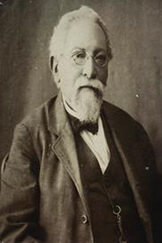
Vid Morpurgo (1838-1911)
Vid (Vito) Morpurgo was a leader of Croatia’s 19th-century nationalist movement and a towering figure in the creative and political history of Split. Morpurgo, born into a prominent Jewish family originally from Marburg in Germany, helped turn Split, a small fishing town with a high rate of illiteracy, into a center of Croatia’s national and cultural renaissance. He published the city’s first books, opened a book-lending service, and founded and wrote for the city’s newspaper. Most importantly, for over 50 years he ran a bookstore where intellectuals would gather to read local and international literature and debate the critical issues of the day.
Morpurgo’s bookstore, which opened in 1860, was also the local headquarters of the Croatian nationalist movement. Split at this stage was part of the Kingdom of Dalmatia, a poor, predominantly Croatian-speaking area of the Austro-Hungary Empire. For centuries, Dalmatia had been controlled by an Italian-speaking faction of landowners and businessmen. Morpurgo, despite being himself an Italian speaker not fluent in Croatian, was a leader of their political rivals, the People’s Party. This cultural and political movement sought to unite Dalmatia with the rest of Croatia and to promote Croatian educational, linguistic, and economic interests. He opened a People’s Bank that operated from the bookstore and which aimed to break the ruling elite’s control over the area’s financial institutions and to provide affordable credit to local people.
Due to his Croatian nationalism, rather than his Jewishness, Morpurgo was repeatedly attacked by supporters of the ruling party. Nonetheless, he remained a steadfast activist and organizer, and was elected to the local parliament. In the turbulent world of increasing Balkan nationalism, he was also noteworthy for his moderate, non-violent attitude.
The energetic Morpurgo also owned a steam brick factory and a successful liquor company. However, it was the bookstore called Morpurgo which kept his name alive long after his death in 1911. Through a non-Jewish supporter, Morpurgo’s relatives were able to keep the bookstore going even during the Holocaust. Under Tito’s Communist regime, the bookstore was nationalized but returned to private ownership in 1990. Until its closure in 2017, it was one of the oldest bookstores in the world. Split’s culture lovers mourned its passing, but a plaque to Vito Morpurgo still stands, as does a street named after him.
J2 STUFF.
We have everything you need to know before you go. Check out our Instagram my_j2adventures for cool updates and interesting tidbits.
The J2 App
available on the App Store & on Google Play.

START PLANNING LET’S EXPLORE.
Whether you have a journey in mind, want to join a featured trip, or simply want to explore, drop us a note. We work really hard to be a loved travel company that delivers amazing and memorable experiences. So please do not be surprised when we say “yes” to every reasonable request you make!


